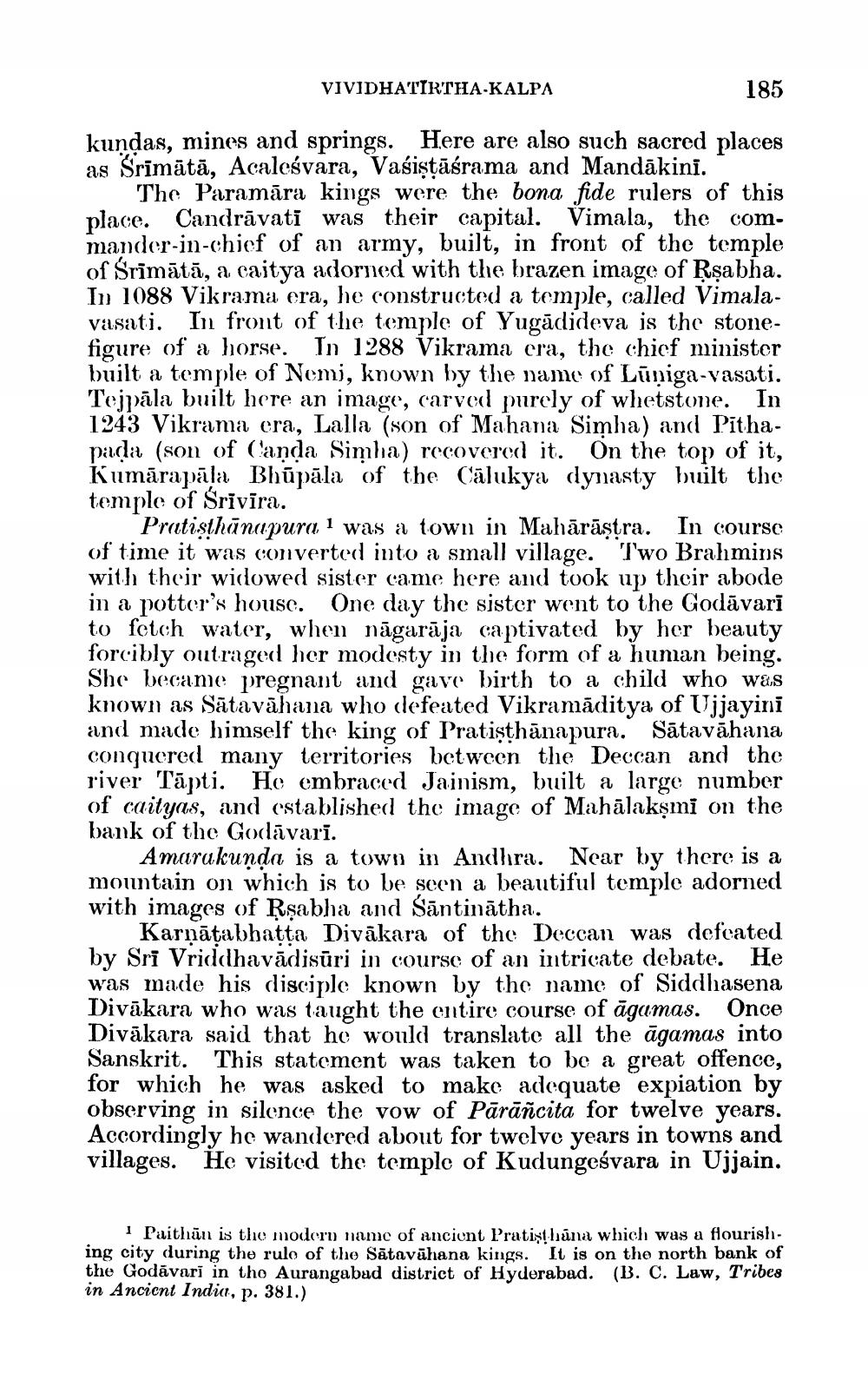________________
VIVIDHATIRTHA-KALPA
185
kundas, mines and springs. Here are also such sacred places as Srimātā, Acaleśvara, Vasiştāśrama and Mandākini."
The Paramāra kings were the bona fide rulers of this place. Candrāvati was their capital. Vimala, the commander-in-chief of an army, built, in front of the temple of Srimātā, a caitya adorned with the brazen image of Rsabha. In 1088 Vikrama era, he constructed a temple, called Vimalavasati. In front of the temple of Yugādideva is the stonefigure of a horse. In 1288 Vikrama era, the chicf minister built a temple of Nemi, known by the name of Lūniga-vasati. Tejpāla built here an image, carved purely of whetstone. In 1243 Vikrama era, Lalla (son of Mahana Simha) and Pithapada (son of (anda Simha) recovered it. On the top of it, Kumāra pāla Bhūpāla of the Cālukya dynasty built the temple of Śrīvīra.
Pratisthānapura, I was a town in Mahārāstra. In course of time it was converted into a small village. Two Brahmins with their widowed sister came here and took up their abode
potter's house. One day the sister went to the Godavari to fetch water, when nāgarāja captivated by her beauty forcibly outraged her modesty in the form of a human being. She became pregnant and gave birth to a child who was known as Sātavāhana who defeated Vikramāditya of Ujjayini and made himself the king of Pratisthānapura. Sātavāhana
uered many territories between the Deccan and the river Tāpti. He embraced Jainism, built a large number of caityas, and established the image of Mahālakṣmi on the bank of the Godāvari.
Amara kunda is a town in Andhra. Near by there is a mountain on which is to be seen a beautiful temple adorned with images of Rşabha and Santinātha.
Karnātabhatta Divākara of the Deccan was defeated by Sri Vriddhavādisūri in course of an intricate debate. He was made his disciple known by the name of Siddhasena Divākara who was taught the entire course of āgamas. Once Divākara said that he would translate all the āgamas into Sanskrit. This statement was taken to be a great offence, for which he was asked to make adequate expiation by observing in silence the vow of Pārāñcita for twelve years. Accordingly he wandered about for twelve years in towns and villages. He visited the temple of Kudungeśvara in Ujjain.
1 Paithūn is the modern name of ancient Pratisthúna which was a flourishing city during the rulo of the Sātavāhana kings. It is on the north bank of the Godavari in tho Aurangabad district of Hyderabad. (B. C. Law, Tribes in Ancient India, p. 381.)




